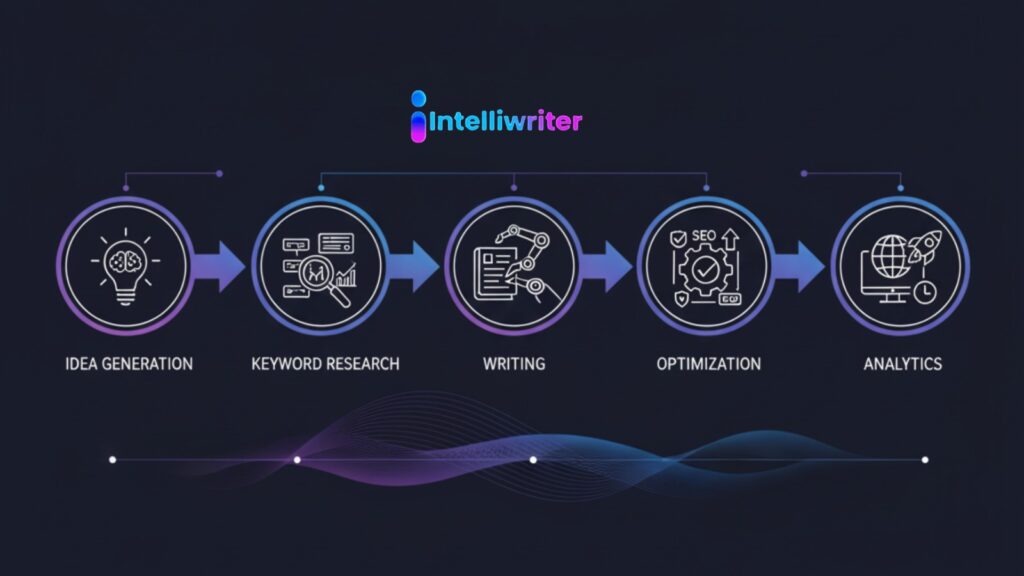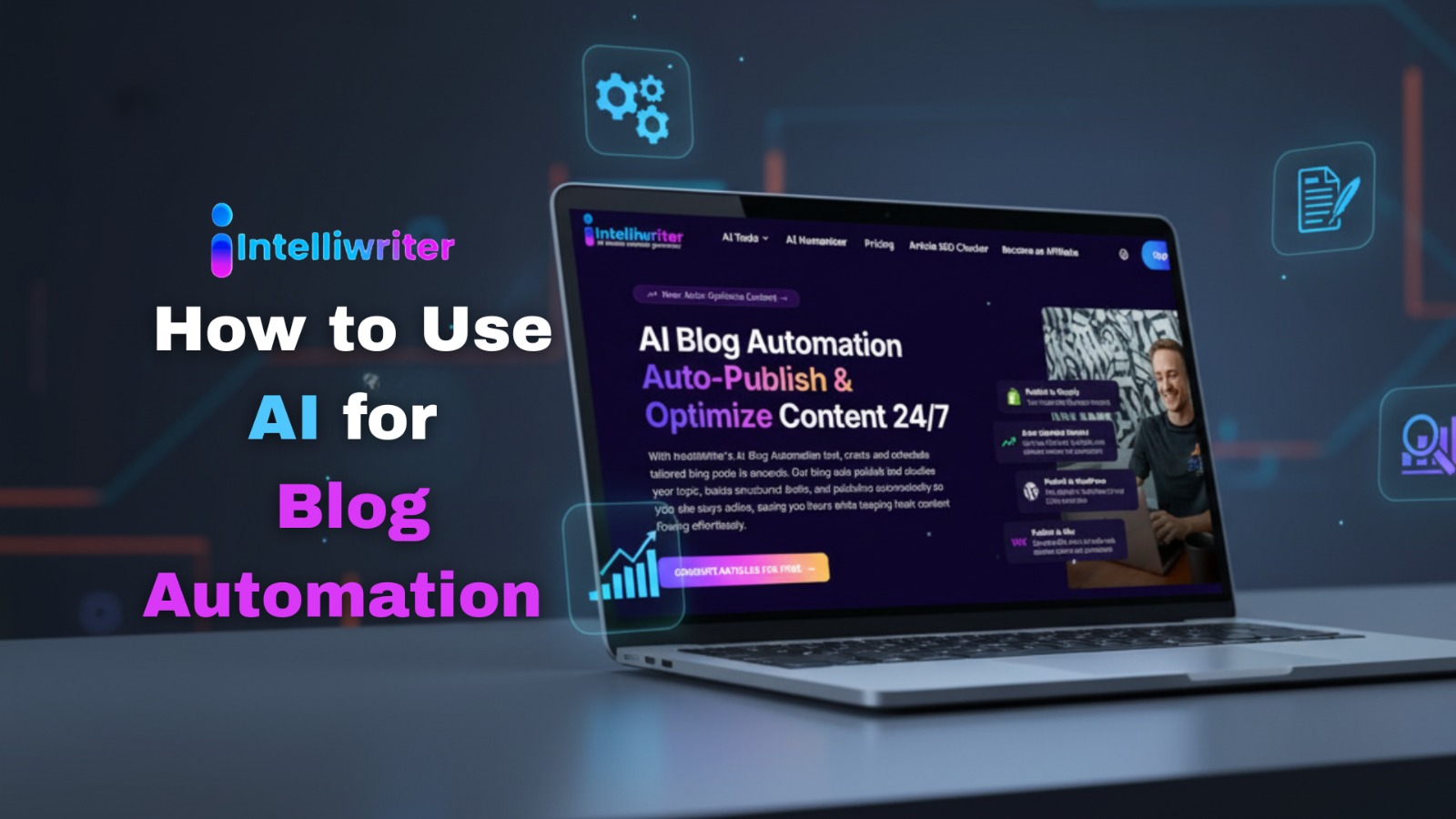With the help of AI, researching, writing, and publishing blogs has changed. If you have the right AI-powered systems, you can now handle tasks that used to need a lot of content writers, editors, and SEO experts. You can focus on being creative instead of worrying about the details when you read this guide on how to use AI for blog automation. We’ll go over everything from planning and writing content to optimizing and posting.
Whether you work for a company or on your own as a marketer, learning how to use AI-driven processes can help you grow your blog like a pro while saving you time and money.
Why Blog Automation with AI Matters in 2026
Blog automation doesn’t mean letting robots write your posts; it means using AI tools to do boring, time-consuming jobs over and over again while you stay in charge of the strategy.
Some of the benefits of automating your blog with AI are:
- Faster content creation cycles
- Consistent publishing schedules
- SEO-friendly keyword optimization
- Reduced human error and editing time
- Better personalization and targeting
Example Table: Manual vs AI-Driven Blogging
| Feature | Manual Workflow | AI-Automated Workflow |
| Content Research | 2–3 hours | 10–15 minutes |
| Blog Drafting | 4–6 hours | 30–60 minutes |
| SEO Optimization | 1 hour | Automated via AI tools |
| Publishing | Manual setup | Integrated automation |
| Overall Efficiency | Moderate | 5× faster |
AI tools like IntelliWriter help automate the process.
How to Use AI for Blog Automation

Step 1: Plan Your AI Blog Strategy
Before creating a single word, define what “success” looks like.
Ask:
- What topics are relevant to your audience?
- Which keywords should you target?
- How often do you plan to publish?
Utilize AI SEO tools like Ahrefs, Semrush, or IntelliWriter to pinpoint content gaps and understand search intent.
Pro Tip: Use AI not just to generate keywords, but to analyze your competitors’ structures and see how they satisfy search intent.
Step 2: Automate Blog Research and Outlines
Based on search trends, tools like IntelliWriter can make content briefs, plans, and frequently asked questions (FAQs).
Instead of collecting topics by hand, you can:
- Come up with 10–15 title ideas using keywords that you want to rank for
- Make blog outlines that look like the designs of top sites
- Make lists of frequently asked questions (FAQs) that are useful for featured snippets
Example Prompt:
“Create an SEO outline on how to use AI for blog automation, including subtopics and FAQs.”
You’ll get a structure right away that is based on research and is best for readability and rating.
Step 3: Draft and Edit with AI Assistance
Even though AI content generators are powerful, they still need to be overseen by humans.
To make material that is real and reliable:
- Share your thoughts and experiences
- Use real-life examples or case studies
Keep the voice and tone of your business
For example, at IntelliWriter.io, we use both AI-assisted drafting and manual editing to keep the standard high while making content 5 times faster.
Step 4: Optimize for SEO and Readability
AI SEO tools automatically check for:
- Keyword placement (density around 1.3%)
- Meta tags and schema structure
- Internal and external linking opportunities
- Readability and tone consistency
Optimization Checklist:
- Use your focus keyword (“How to Use AI for Blog Automation”) in the first 10%
- Include it in at least one subheading
- Add LSI keywords naturally (e.g., AI blog automation, SEO optimization, blog content workflow)
- Include bullet points, numbered lists, and visuals
Step 5: Automate Publishing and Distribution
Automation tools like IntelliWriter can make your post go live at certain times once it’s ready.
There are even tools that can:
- Post the article instantly on your website
- Share it on LinkedIn, X (Twitter), or Medium
- Use email marketing tools like ConvertKit to send out new posts
Want to make the whole process of making a blog automatic?
IntelliWriter.io’s AI Blog Automation System is made for creators, marketers, and companies who want to scale more smartly.
Case Study: Scaling Content 5× Faster with AI
One content agency reported cutting production time from 12 hours per post to just 2 hours by integrating AI-powered research, writing, and publishing systems.
How they did it:
- Used AI for keyword and title generation
- Drafted outlines
- Finalized posts with manual tone adjustments
- Automated uploads using Intelliwriter
Result: 40% higher publishing frequency, 25% traffic growth in 3 months.
Common Mistakes to Avoid When Automating Blogs
- Over-relying on AI for creativity
- Skipping fact-checking or citations
- Ignoring search intent and topical authority
- Publishing AI drafts without human editing
Instead:
Use AI as a co-writer, not a ghostwriter. Combine data precision with human storytelling for the best results.
The Future of Blog Automation

AI will soon predict trending topics, personalize tone per reader, and even adapt content to voice search.
By setting up a structured, ethical automation workflow now, you’ll future-proof your blog against algorithm shifts.
It’s not about replacing writers, it’s about empowering them.
Pro Insight: According to HubSpot’s 2025 AI Marketing Report, 77% of marketers plan to automate at least half their content process using AI tools.
FAQs About AI Blog Automation
1. Can AI really write full blog posts?
Yes, but they still need human editing to ensure originality, tone, and accuracy. You can also humanize your content with AI Humanizer.
2. Which is the best AI tool for blog automation?
It depends on your needs. Tools like IntelliWriter, Jasper, and SurferSEO are great for different parts of the process.
3. Is AI-generated content good for SEO?
Absolutely, when combined with human input, fact-checking, and originality, it can rank just as well (or better) than manually written content.
4. How can I ensure my AI content isn’t flagged by Google?
Follow EEAT principles (Expertise, Experience, Authoritativeness, and Trustworthiness), cite sources, and provide real insights.
5. Can I automate content updates?
Yes, AI can track decaying content and suggest updates automatically to maintain rankings.
Conclusion: Smart Automation with a Human Touch
AI blog automation isn’t about shortcuts; it’s about smart scaling.
When used correctly, it boosts productivity, enhances creativity, and strengthens SEO performance.
If you’re ready to transform your content strategy, streamline your workflow, and embrace the future of blogging, start your journey today with 👉 IntelliWriter.io/ai-blog-automation.
That’s because the best writers in 2026 will not only write, but also program smart machines to write with them.

Leave a Reply